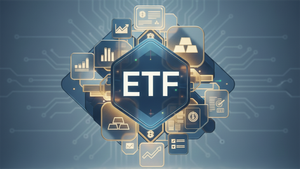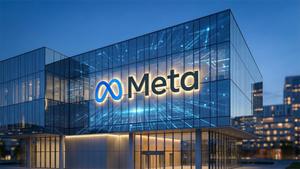
The artificial intelligence (AI) boom, which propelled tech stocks to unprecedented highs throughout late 2023 and early 2024, is now facing a significant reality check. A growing wave of skepticism regarding the sustainability of the AI frenzy, largely ignited by a recent MIT report highlighting limited returns on generative AI investments, has triggered a notable downturn across the tech sector. This recalibration is prompting investors to aggressively re-evaluate high-flying AI-related stocks, leading to substantial market corrections and a shift from speculative enthusiasm to a demand for tangible returns.
This market adjustment signals a crucial phase for the AI industry, where the initial excitement is confronting the complexities of real-world implementation and profitability. The immediate implication is a period of heightened volatility and a more discerning investment landscape, forcing companies to demonstrate clear pathways to monetizing their AI innovations.
The Great AI Re-evaluation: What Happened and Why It Matters
The current tech sell-off is a direct consequence of the market's re-evaluation of AI's immediate commercial viability. For months, the promise of generative AI, exemplified by the debut of OpenAI's ChatGPT in late 2022, fueled an aggressive buying spree in AI-related stocks. Companies like Nvidia (NASDAQ: NVDA) saw their valuations soar, with its stock surging over 1,000% since autumn 2022. However, this "AI Mania" began to unravel in mid-2025 as concerns about long-term profit sustainability mounted.
A pivotal moment arrived in July 2025 with the release of a report from MIT's Project NANDA (also referred to as NADA), titled "The GenAI Divide: State of AI in Business 2025." The report's findings were stark: despite an estimated $30-40 billion in enterprise investment in generative AI initiatives, a staggering 95% of these projects yielded no measurable business return. Only a mere 5% of integrated AI pilots delivered significant value, with the vast majority stalled at experimental stages or showing no measurable impact on profit and loss (P&L) statements. The report attributed this widespread failure not to the quality of AI models, but primarily to a "learning gap" within companies and flawed integration strategies.
News of the MIT report began to circulate widely in mid-August 2025, acting as a significant catalyst for market apprehension. By August 19, 2025, high-flying AI stocks experienced notable pullbacks. Nvidia (NASDAQ: NVDA) saw a sharp correction, including a 4.9% single-day drop and its first losing week in nine. Palantir Technologies (NYSE: PLTR), an AI data analytics firm, experienced a significant decline, with its stock falling over 9% on this day, marking its fifth consecutive day of decline and a more than 15% drop over that period. SoundHound AI (NASDAQ: SOUN) also saw a 10% decline, and the Nasdaq Composite fell 1.4%. The sell-off continued into August 20, 2025, with Opendoor Technologies (NASDAQ: OPEN) stock falling 14% due to inflation and AI-related concerns, and the Nasdaq shedding another 0.7%.
Key players involved in this market dynamic include the affected companies themselves, such as Nvidia (NASDAQ: NVDA), Palantir Technologies (NYSE: PLTR), SoundHound AI (NASDAQ: SOUN), and Opendoor Technologies (NASDAQ: OPEN). Influential voices like OpenAI CEO Sam Altman have also contributed to investor caution by comparing the current situation to the dot-com bubble. Analysts, such as those from Citron Research, have issued bearish reports on companies like Palantir, arguing their valuations are "detached from fundamentals." Investors are now scrutinizing the fundamentals of AI-driven growth more closely, leading to a noticeable rotation away from high-growth tech stocks and a demand for tangible returns and clear paths to profitability.
The Shifting Sands: Winners and Losers in the AI Tech Sell-off
The growing skepticism surrounding AI investments and the broader tech sell-off is creating a distinct landscape of winners and losers, as the market recalibrates from speculative hype to a demand for tangible returns and sustainable business models.
The Resilient Winners: Infrastructure and Diversified Giants
Companies poised to win or remain resilient are generally those providing essential AI infrastructure, diversified tech giants with strong existing revenue streams, or firms with proven AI applications that enhance already profitable core businesses. These are the "picks and shovels" providers of the AI gold rush.
AI Infrastructure Providers:
- Nvidia (NASDAQ: NVDA): Despite recent pullbacks, Nvidia remains a long-term winner as the leading designer of GPUs essential for AI computation. Its data center business is its largest revenue driver, with demand for its H100, H200, and new Blackwell microarchitecture chips continuing to soar.
- Microsoft (NASDAQ: MSFT): A significant winner due to its massive cloud infrastructure, Azure, which is a primary profit center and a backbone for global AI adoption. Microsoft's diversified revenue streams (cloud, productivity tools like Microsoft 365 Copilot, LinkedIn, Dynamics 365) provide resilience.
- Amazon (NASDAQ: AMZN): Amazon Web Services (AWS) is the world's leading cloud platform, with about 30% of the cloud infrastructure market, benefiting directly from AI demand.
- Oracle (NYSE: ORCL): A leader in AI infrastructure, with data centers attracting top AI developers. Oracle and Google (NASDAQ: GOOGL) recently announced a cloud alliance to provide Oracle's enterprise customers access to Google's advanced generative AI models.
- Advanced Micro Devices (NASDAQ: AMD): Expanding its presence in high-performance computing and data centers with its Ryzen processors and EPYC chips.
- Taiwan Semiconductor Manufacturing Company (NYSE: TSM): As the world's leading semiconductor foundry, TSMC manufactures chips for companies like Nvidia and AMD, making it critical to the AI infrastructure buildout.
- Dell Technologies (NYSE: DELL): Dell's AI-optimized server order bookings reached $12 billion last quarter, higher than all its shipments in the previous fiscal year, indicating strong demand for its hardware.
Diversified Tech Giants with AI Integration:
- Alphabet (NASDAQ: GOOGL, GOOG): Leveraging AI to strengthen its core businesses, Alphabet's Search division has seen renewed momentum with "AI Overviews," contributing to a 12% year-over-year increase in search revenue.
- CrowdStrike Holdings (NASDAQ: CRWD): This cybersecurity leader uses AI and machine learning to detect threats, boasting a strong customer base and resilient performance.
The Vulnerable Losers: Overvalued Pure-Plays and Disrupted Legacies
Companies likely to lose or face significant headwinds are often those with highly speculative valuations, unproven business models heavily reliant on AI hype, or legacy software providers facing disruption.
Overvalued "Pure-Play" AI Software Companies:
- Palantir Technologies (NYSE: PLTR): Despite being a top performer in 2024 and early 2025, Palantir has faced sharp declines in August 2025, attributed to overvaluation concerns. Its shares trade at over 600 times earnings and about 120 times annual sales, far exceeding historical norms.
- C3.ai (NYSE: AI): As an enterprise AI software company dedicated almost exclusively to AI solutions, C3.ai has been among the biggest laggards in the software sector, down 23% since early August 2025. Its reliance on speculative growth metrics makes it vulnerable.
- SoundHound AI (NASDAQ: SOUN), Upstart Holdings (NASDAQ: UPST), Riskified (NASDAQ: RSKD): These pure-play AI stocks have high growth potential but also high volatility and reliance on AI as their core business, making their valuations susceptible to shifts in investor sentiment.
Legacy Software Companies Facing AI Disruption:
- Salesforce (NYSE: CRM): Salesforce's stock has dropped significantly year-to-date in 2025. While AI integration has boosted SaaS profitability, the sector's reliance on speculative growth metrics leaves it vulnerable, with projected growth indicating struggles to translate AI into significant top-line gains.
- Adobe (NASDAQ: ADBE): Adobe shares have declined, driven by growing fears that generative AI could disrupt demand among its core creative user base.
This period of market recalibration favors companies with robust, diversified business models and those providing the foundational infrastructure for AI development, while companies with speculative valuations and unproven AI monetization strategies face significant headwinds as investors demand tangible returns.
A Historical Echo: Industry Impact and Broader Implications
The recent AI tech sell-off and the accompanying rise in skepticism signify a crucial recalibration within the technology sector, moving beyond initial speculative fervor towards a more discerning evaluation of fundamental value and sustainable business models. This event is not merely a market fluctuation but reflects deeper industry trends, with potential ripple effects across competitors and partners, significant regulatory implications, and striking parallels to historical market phenomena like the dot-com bubble.
The sell-off indicates a shift in investor sentiment from unbridled enthusiasm to a more cautious and strategic approach, scrutinizing the sustainability of high valuations and the practicality of business models, particularly for generative AI. This period is seen by some as a "healthy reset" for the AI sector, rather than an end to its growth. A key concern highlighted by the "AI Mania" is the unprecedented concentration of the U.S. stock market, where the top 10 stocks, including major AI players like Nvidia (NASDAQ: NVDA), constitute a significant portion of the S&P 500's total market capitalization, raising alarms about potential lower returns and increased systemic risk if these mega-cap stocks decline.
Despite the current skepticism, AI is still widely recognized as a transformative technology and a major engine for productivity and economic growth, with projections suggesting it could double annual global economic growth rates by 2035. However, the MIT report indicating that 95% of generative AI pilot programs are failing to deliver measurable business returns has fueled investor anxiety and contributed to the sell-offs. This has led to a market shift where investors are prioritizing tangible results, profitability, and realistic growth projections over speculative potential.
The market correction is expected to lead to a divergence in performance: companies with strong balance sheets, diversified revenue streams, and clear, tangible AI applications are likely to perform better, while those with inflated valuations and less clear business models will face ongoing pressure. The sell-off also challenges the Software-as-a-Service (SaaS) business model, as AI's ability to enhance efficiency could allow users to achieve more with fewer resources, potentially reducing the need for multiple software subscriptions and eroding the competitive advantages of established players like Salesforce (NYSE: CRM) and Adobe (NASDAQ: ADBE).
Growing skepticism towards AI is accompanied by strong public and expert support for increased regulation. Regulators worldwide are actively addressing the implications of AI. The European Union's AI Act has set a precedent for comprehensive AI legislation, and regions like California are pushing for their own regulations focusing on transparency, safety protocols, and accountability for high-risk AI creations. These regulations aim to balance fostering innovation with ensuring safety and accountability, requiring AI companies to report their activities, follow safety protocols, and participate in third-party audits. Furthermore, there are emerging concerns about the potential for advanced AI trading systems to create concentration risk and market instability, with regulators warning of "monoculture" effects in financial markets.
The current AI boom and subsequent sell-off draw striking comparisons to the dot-com bubble of the late 1990s and early 2000s. Experts, including OpenAI CEO Sam Altman, have noted that investors may be "over excited" about AI, with valuations running ahead of underlying fundamentals, much like the internet firms of the dot-com era that often lacked clear revenue paths. Some economists even suggest that the current AI bubble might be larger and more overvalued than the dot-com bubble, implying potentially more severe consequences if a sharp correction occurs. The Nasdaq's nearly 80% loss of value between March 2000 and October 2002 serves as a cautionary tale.
While the parallels are evident, some analysts believe that the fundamental drivers of AI adoption and infrastructure buildout remain robust, suggesting that any correction might be a "healthy reset" that paves the way for more sustainable, fundamentals-driven growth, rather than a complete collapse.
The Road Ahead: What Comes Next
The recent AI tech sell-off has prompted a critical re-evaluation of the artificial intelligence and broader technology markets, shifting focus from speculative fervor to fundamental value and sustainable growth. This correction, while painful for some, sets the stage for a more mature and discerning phase of AI development and investment.
In the short term, the AI and tech markets are expected to experience continued volatility. Investors will scrutinize company fundamentals, prioritizing sustainable growth and clear pathways to profitability over speculative potential. This will likely lead to a divergence in performance, where companies with robust balance sheets, diversified revenue streams, and tangible AI applications will continue to perform well, while those with inflated valuations and less clear business models face ongoing pressure. Some analysts view this sell-off as a "healthy reset," suggesting that institutional capital is poised to buy on dips at more disciplined valuations. However, profit-taking is expected to persist, contributing to price fluctuations, potentially triggered by poor earnings reports, regulatory headlines, or broader macroeconomic shocks.
Looking long-term, the outlook for AI and tech markets remains overwhelmingly positive, signaling a transition into a more mature phase of the AI revolution. The global AI market is projected for substantial growth, potentially soaring to $4.8 trillion by 2033, with generative AI alone surging at a 46.47% compound annual growth rate (CAGR). AI is poised to become a "general purpose technology," leading to widespread adoption and continuous improvements that will significantly enhance productivity across various sectors. The integration of AI into profitable business models is expected to foster stronger customer relationships, expand competitive advantages, and drive revenue growth.
Companies must undertake strategic pivots and adaptations. A crucial shift from pure AI research and development to practical implementation and commercialization is required, demanding that companies demonstrate real-world applications of AI and deliver measurable return on investment (ROI). The focus will move towards building sustainable business models rather than relying on speculative growth. Companies also need to overcome internal "learning gaps" and rectify flawed AI integration strategies, as highlighted by the MIT report. This period will also see increased investment in essential AI infrastructure, specialized AI services, and niche AI applications that solve specific industry problems. Mergers and acquisitions (M&A) are anticipated to outpace IPOs for AI exits in the near term, as larger tech firms consolidate talent and technology.
Market opportunities will emerge, particularly in private companies focused on software-led innovation, "AI essentials" such as utilities supporting data centers, and in developers, especially enterprise software companies integrating AI into their offerings. New avenues for investment include data infrastructure, edge computing, and AI ethics frameworks. However, significant challenges remain, including ongoing valuation concerns, uncertainty about the actual payoff of AI investments, high costs and resource demands, and the evolving regulatory landscape. The potential for AI to concentrate economic and political power, coupled with job displacement concerns, will also require careful navigation.
Conclusion: A New Era of AI Investment
The recent tech sell-off, driven by growing skepticism about the immediate returns of generative AI, marks a critical turning point for the artificial intelligence market. It signifies a necessary shift from a period of speculative exuberance to one demanding tangible value and sustainable business models. The MIT report served as a stark reminder that while AI's potential is immense, its successful integration into enterprise operations is far from guaranteed.
Moving forward, investors will be far more discerning, prioritizing companies that can demonstrate clear, measurable returns on their AI investments. The market will likely favor established tech giants with diversified revenue streams and robust cloud infrastructure, as well as "picks and shovels" providers of AI hardware and services. Pure-play AI companies with inflated valuations and unproven business models will continue to face significant headwinds.
The lasting impact of this recalibration will be a more mature and resilient AI industry. Companies will be compelled to focus on practical applications, address internal "learning gaps," and build sustainable business models that deliver real-world value. Regulatory scrutiny will also intensify, aiming to balance innovation with ethical considerations, data privacy, and market stability.
Investors should watch for several key indicators in the coming months: the ability of AI companies to translate pilot programs into scalable, profitable solutions; the evolution of regulatory frameworks globally; and the continued investment by major tech players in foundational AI infrastructure. While the immediate future may hold continued volatility, this period of reality-checking is ultimately healthy, paving the way for a more sustainable and impactful AI revolution built on solid fundamentals rather than mere hype. The trajectory of AI's influence on financial markets and public companies is poised for continued evolution, demanding that investors and companies alike navigate a complex landscape where groundbreaking potential meets the realities of market cycles and the imperative for sustainable returns.





